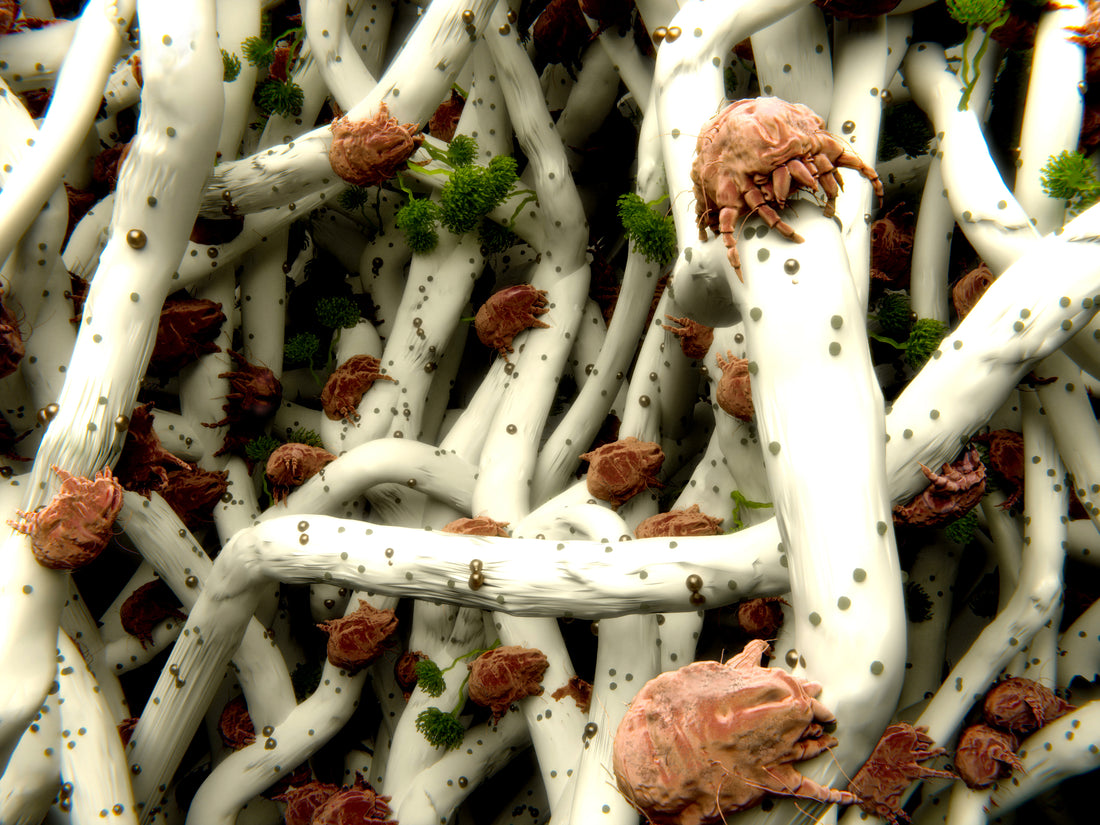
5 Questions That You Probably Already Asked About Dust Mites
Share
- What are dust mites?
Dust mites are tiny arachnids, practically invisible for our eyes. These parasites are feeding with falls skin cells. They thrive in warm, humid environments, such as someone's home.
- What can they do to us?
These tiny creatures can cause dust mite allergy for that people who are sensitive for the proteins what they emit. This is an allergic reaction to the tiny bugs’ feces. We inhale dust mite poop, and this causes allergic reactions in case of sensitive people. Signs of dust mite allergy include those common to hay fever, such as sneezing and runny nose. Many people with dust mite allergy also experience signs of asthma, such as wheezing and difficulty breathing.
- Why do some people have allergies from dust mites and others don’t?

Household allergens are common, but the way they affect people differs. For some, encountering dust mites leads to itchiness, a runny nose and sneezing, while others remain unaffected. New research examines why this is the case to treat causes of allergies and asthma, which can be aggravated by allergic reactions. A previously unknown subset of T cells has been uncovered. Those T cells may restrict allergic immune reactions and asthma from ever developing in response to possible allergens, including house dust mites. “We discovered new immune cell subsets and new therapeutic opportunities. This new population of cells could be one, out of many unknown mechanisms, that explains why healthy people don’t develop inflammation when they breathe in allergens.” (La Jolla Institute for Immunology scientists)
- Can my pet be allergic to dust mites too?
Yes, Dogs can also have dust mite allergy. When your dog is scratching you can think about lots of illnesses and allergies, but you might not think about dust mite allergy first. Dogs with dust mite allergies can be misdiagnosed because the symptoms are very similar to other allergic conditions. The scratching and inflammation may be mistaken for fleas, dry skin, or chronic dermatitis when it is actually the dust mite that is causing the reaction.
- How can I get rid of them?
It’s nearly impossible to get rid of dust mites completely. But there are some methods that can help to reduce their numbers. Wash your beddings, pillows, curtains, stuffed animals more often, ventilate once a day. In dry summer days you can ventilate your bedding outside, this also can help to reduce the number of dust mites. Dedust with wet clothes and vacuum the carpet more often. You can also use chemicals for the cleaning to reduce the dust mite concentration, but who wants to use chemicals in their bed?
Dust mites multiply rapidly, one mite is enough to infect your whole household. It’s not sufficient if you are trying to get rid of them, because we bring them into the house on our clothes / hair every day. We also think that they are living only in our bed, but it’s not that simple. They like the humid and warm environment, so basically they like our homes. They live in the curtains, carpets, stuffed animals, beddings, pillow, and furniture. There are much more dust mites in the sofa because we sit on the couch in our street clothes, so we put the dust mites on the sofa, and they can settle easily.

Thanks to the ultrasonic technology, Miteless Home can repel dust mites in your home effectively. The results can be felt in just a few weeks after you started using it. It is chemical-free and odorless, doesn’t contains any toxins and is safe to use for everyone even babies, pregnant women, ill or elderly people and animals as well.
Miteless not only reduces the concentration of dust mites but the symptoms of allergy can ease too.
Check out our chemical-free Miteless dust-mite repellent product!
